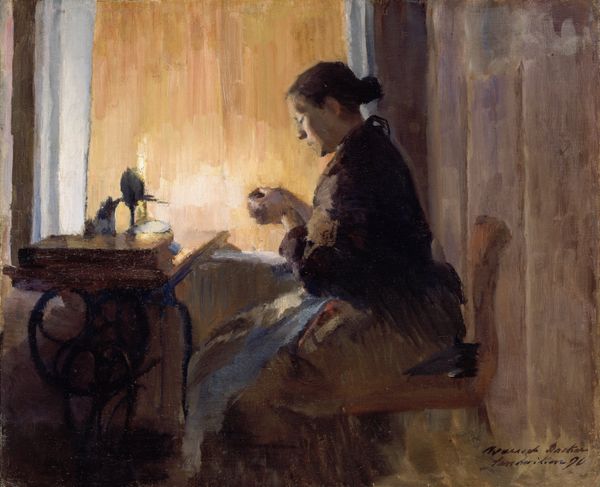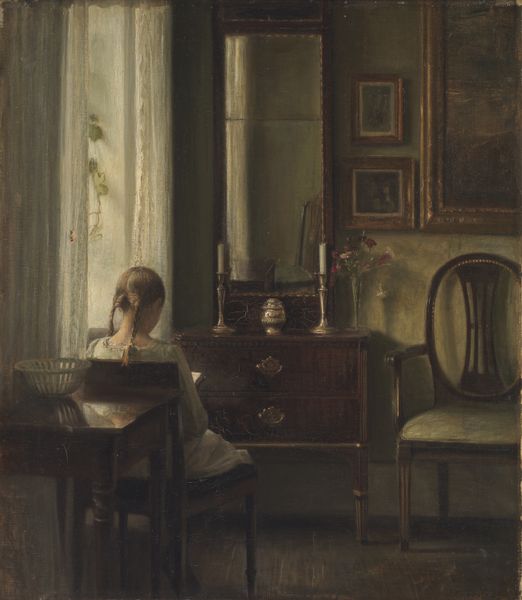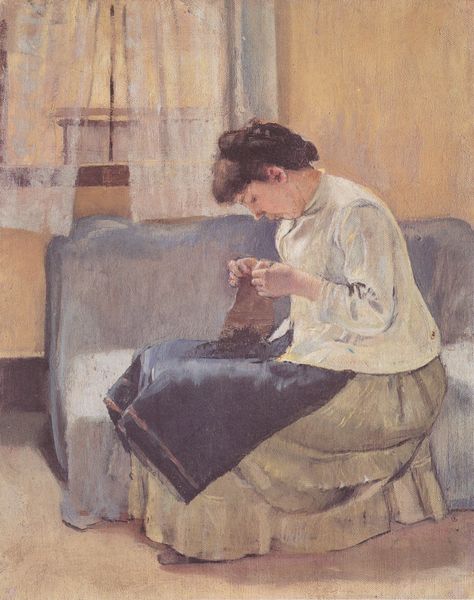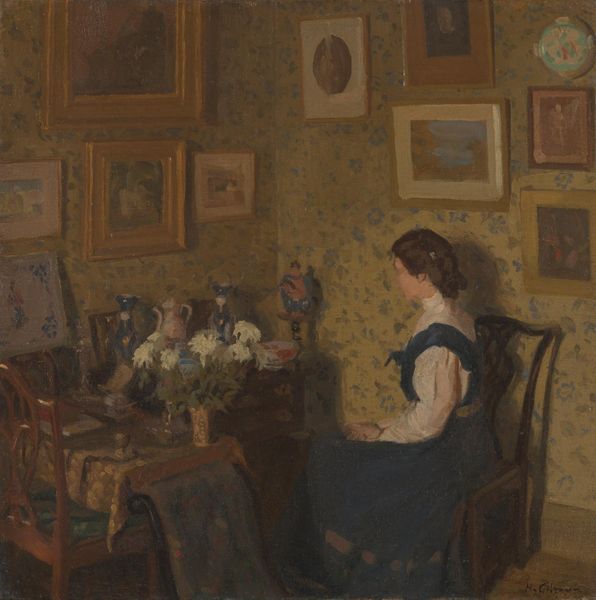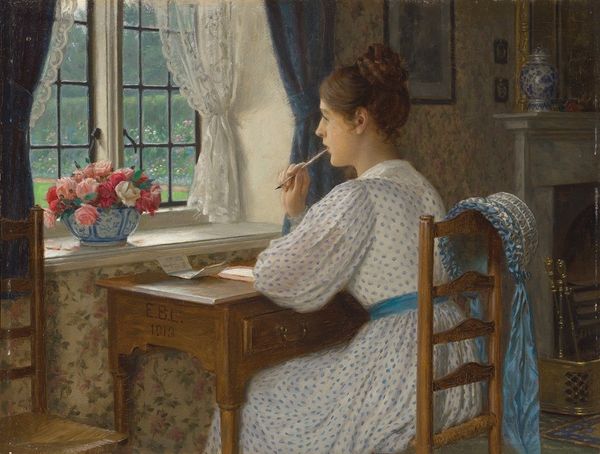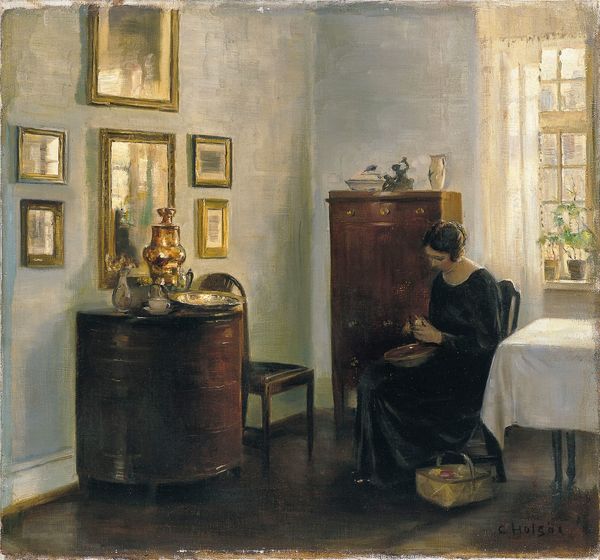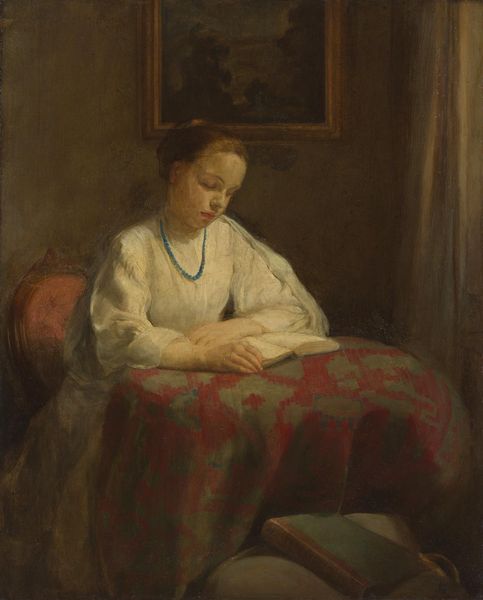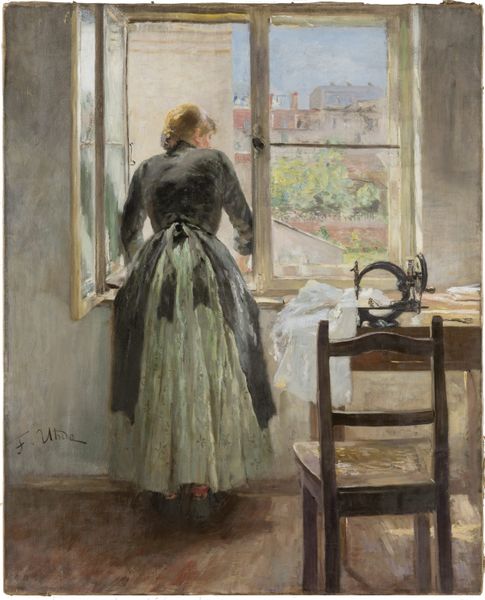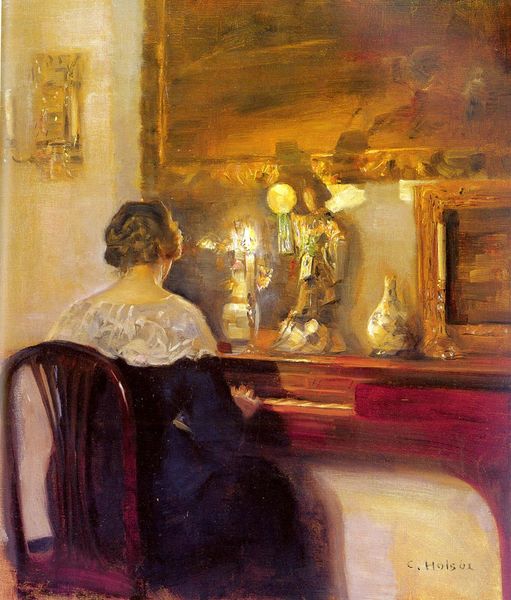
Dimensions: overall: 66.68 × 51.44 cm (26 1/4 × 20 1/4 in.) framed: 87.63 × 72.71 × 6.99 cm (34 1/2 × 28 5/8 × 2 3/4 in.)
Copyright: National Gallery of Art: CC0 1.0
Curator: We’re now looking at "Josephine Knitting," an oil painting created in 1916 by Edmund Charles Tarbell. Editor: It strikes me immediately as incredibly tranquil. The muted palette and soft brushstrokes create a very still, domestic scene. Curator: Absolutely. Tarbell was a key figure in the American Impressionist movement, and this painting exemplifies what's called Intimism. Notice how the interior space becomes a subject in itself, reflecting contemporary notions of femininity. The woman isn't overtly performing; she’s simply existing in her private sphere. Editor: I’m drawn to the subtle play of light and shadow across the composition. See how the sunlight filters through the sheer curtains, gently illuminating Josephine's face and hands. It’s a delicate atmospheric effect achieved with very careful brushwork. Curator: And it's significant that she's knitting. During wartime, knitting became a symbol of patriotic duty and female contribution to the war effort. The simple act embodies agency and resilience. Editor: I hadn't considered that. I was more focused on the formal qualities—the composition's arrangement of color and geometric shapes. The doorway and interior structure provides such a satisfying visual rhythm, playing off cool whites with those little flashes of bold reds. It creates a depth that leads the eye deeper into the space, don't you agree? Curator: Indeed. The framing allows us to analyze themes around domesticity, labor, and gender roles in the early 20th century. It gives agency to a portrait depicting this ordinary, everyday woman, far beyond her social class constraints. Editor: I can see the painting also works beautifully as a study in textures: the smooth, porcelain skin contrasted with the rough materiality of the woven fabrics and the brushstrokes describing the surfaces in the room. Curator: Yes, both the artistic value of texture as well as the painting's place in cultural understanding work beautifully. Editor: It certainly leaves me feeling at peace; a remarkable feat with such quiet visual language. Curator: Absolutely. And with that, we come away not just with aesthetic enjoyment, but with enriched contextual knowledge.
Comments
No comments
Be the first to comment and join the conversation on the ultimate creative platform.


